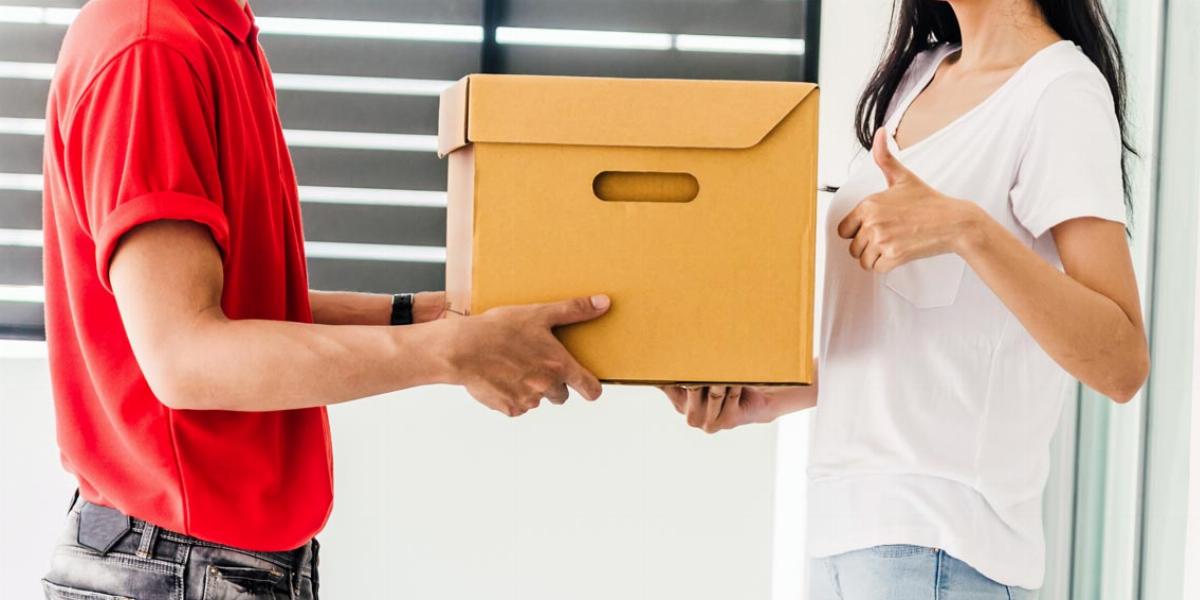
With a quick click, today’s consumers can have just about anything delivered directly to their doorstep. These shipments are carefully packed in a cardboard box, wrapped in layers of plastic and insulated with even more material.
Many customers aren’t comfortable with this waste and your business can see real benefits by rethinking your shipping strategy. We collected these eco-friendly packaging ideas, with expert tips from Packsize and The UPS Store, to help your business increase efficiency, save money and improve your reputation.
Green packaging, also known as sustainable packaging, means using recyclable and biodegradable materials and eco-friendly shipping methods to lessen your business’s environmental impact.
In 2015, the EPA reports 1.9 million tons of cardboard boxes alone were sent to landfills. Cardboard, along with other shipping products, account for about 26 percent of the waste stream in the U.S. And many common packaging materials, like Styrofoam peanuts, can’t be recycled.
By refining your shipping and distribution processes, your business can help to reduce energy consumption and keep reusable packaging materials from the landfill.
Think about all the supplies used to ship your products. Do you use shrink wrap, packing peanuts or bubble wrap for extra padding? What kind of tape do you use? Are your boxes made from recycled content? Use the inventory checklist below to stock your distribution center with green materials.
Sustainable Packaging Checklist:
When it comes to boxes, size matters. By using smaller, custom-designed boxes, businesses can cut their use of corrugated cardboard, reduce the need for unsustainable void fillers and increase their overall shipping efficiencies.
On average, 40 percent of each box shipped today is air, according to Melissa Clyne of Packsize. Instead of defaulting to one-size-fits-all boxes and spending more than necessary on shipping costs, consider finding an on-demand packaging solution to create customized sizes as you need them.
“By using the right-sized box you can actually put more product smartly on that freight carrier, airplane, or other transportation it needs to reach its intended location. This all contributes to a better lifecycle from creation to delivery.”Melissa Clyne | Corporate Communications & Marketing Director, Packsize International
Fragile items sometimes need a little extra cushion, but the traditional Styrofoam or Expanded PolyStyrene (EPS) are non-biodegradable and difficult to recycle.
To replace Styrofoam fillers and green your shipping strategy:
If Styrofoam is the only packaging option for your product, consider sharing disposal tips with your consumers on your website or as a package insert:
“We have eliminated polystyrene loose fill peanuts from our approved list of packing materials that our stores use. As an alternative to peanuts, our stores use kraft paper as a packaging solution for lighter weight shipments, and inflatable air cushions to protect heavier weight items.”Jenny Robinson | Public Relations, The UPS Store
Transporting a large amount of product around the warehouse? Preparing pallets for shipment? Don’t jampack your products into big, hard-to-handle boxes. Save energy and money by securing smaller boxes together with recyclable stretch film to:
Make reducing packaging waste in your facility a team effort. Explain your recycling and waste management plan, and make sure your staff is trained to correctly package your inventory.
Tell your customers about your sustainable packaging – they’ll appreciate your effort. Make note of your green shipping strategy on your website and with each package. Include details about your ecofriendly boxes, compostable packaging peanuts or green bubble wrap and instructions for recycling each material to bring your sustainability efforts full circle.
Green packaging is just one part of the puzzle. To take your business’s sustainability efforts a step further, consider sustainable manufacturing processes or learn how to become LEED certified.
Looking for more tips? Visit the Commercial section of our blog to read waste removal tips and learn how to set a waste diversion plan for your business.